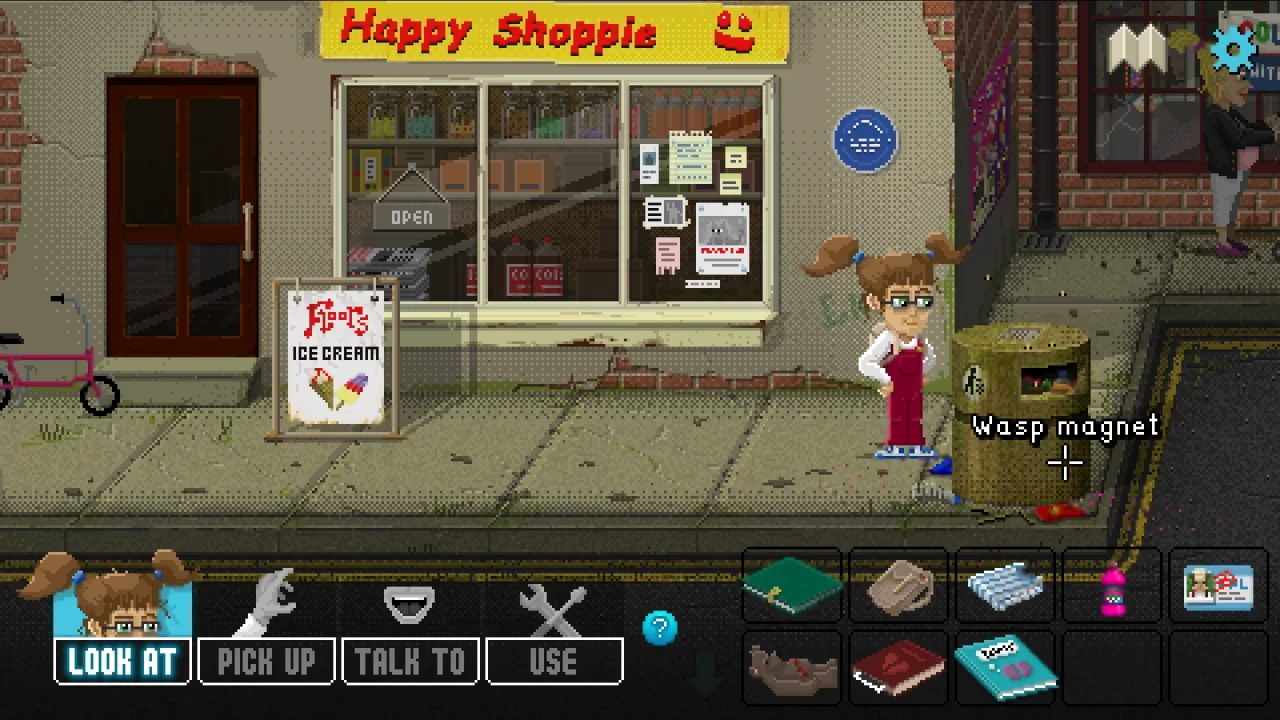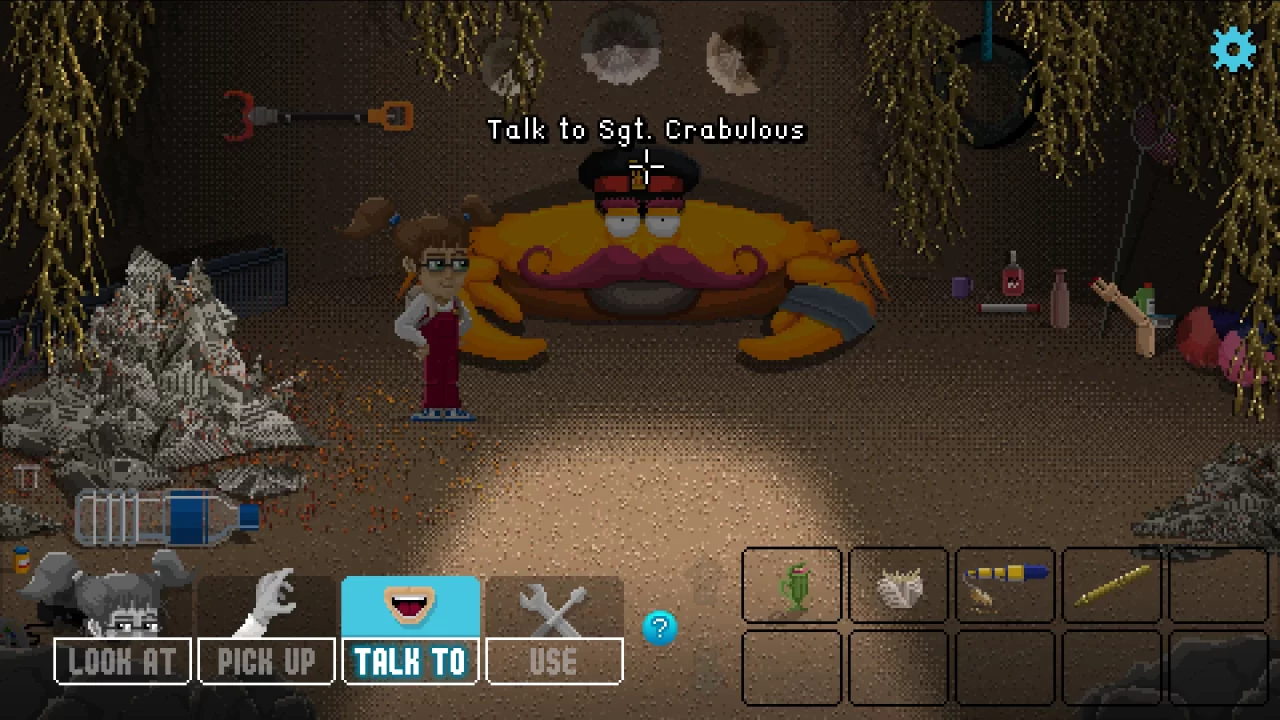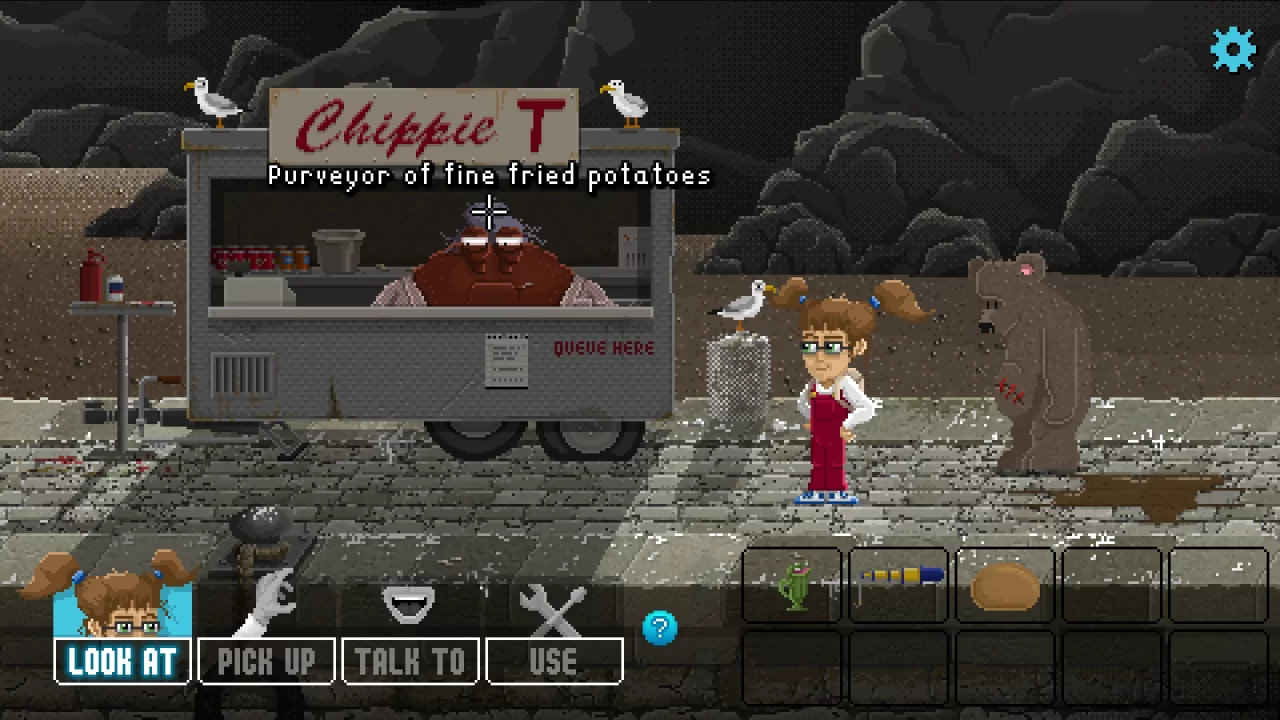There’s no shyness in Lucy Dreaming regarding its influences. When I’d wake from slumber as a teen in the nineties, my remembered nighttime gaming visions looked like this. Back then, the quality of video game storytelling drove many of us away from action titles and towards more accommodating forms, like JRPGs. However, players also found solace in the burgeoning adventure game genre, which placed an eccentric and comedic spin on narrative-based interactive experiences.
During this period, LucasArts, the undisputed titan of the field, built on the success of eighties titles such as Maniac Mansion by creating enduring classics, like The Secret of Monkey Island. These games inspired the small team at developer Tall Story Games, who obviously have the same affection for those days that I do.
Lucy Dreaming follows in LucasArts and its contemporaries’ hallowed footsteps, attempting to replicate the experience of booting up one of those legendary titles. It tells the story of Lucy, a young English girl who lives in the small town of Figgington, a bizarre hybrid of a seaside postcard, a British rural detective drama, and The League of Gentlemen.
Lucy suffers from nightmares that make it impossible for her to sleep, so she turns to one of her father’s psychology books for advice. It advocates creating a dream box and filling it with inspiration, along with an appropriate companion. If you think Figgington sounds odd, just wait until you see the outlandish worlds that await Lucy when she pops on her pyjamas and takes the plunge into her unconscious.
Lucy Dreaming adopts a simplified variation on the SCUMM control system developed by LucasArts for Maniac Mansion. You have four commands that you use to interact with objects: Look At, Pick Up, Talk To, and Use. From these limited options spring a multitude of possibilities, but the cursor defaults to “Look At.” You press a button to scroll through the others, which feels like a legacy of its pre-console origin. I believe a better choice would be to allow the mapping of the options onto different inputs, but even so, cycling through to find what you need soon becomes second nature.
You use the commands to explore the environment, examine artefacts, hold conversations, and merge items. As any keen adventure game player will tell you, the primary purpose lies in finding the silliest combinations of instructions that you possibly can just to see what happens. If this sounds appealing, then Lucy Dreaming has you covered, as nearly everything you can think to do results in a witty response, or at the very least a groan-inducing pun.
Only every so often do you come up against the dreaded stock phrases prevalent in the genre, with Lucy saying something along the lines of “I don’t want to do that.” This happens much less than in other, similar titles, sometimes sounding as repetitive as that time you played Tomb Raider and kept trying to make Lara do something unpleasant.
Lucy Dreaming gives you many incentives to explore. With its pixellated graphics, it has a wonderfully retro look that transported me straight back to rainy afternoons after school, marvelling at the sophisticated graphics of the new age. It could be the nostalgia talking, but its muted palette, which blends a gritty, down-to-earth look with a comic-book aesthetic, perfectly suits the project. Lucy Dreaming’s style captures the run-down banality of Figgington’s environments but adapts nicely to the more fantastical dream worlds that Lucy travels to. This makes sense, as things drawn from Lucy’s life populate the dreams, and subtly linking the dreams in this way really works.
Lucy Dreaming takes place in a relatively small number of environments, but each makes a distinctive impact. In Figgington itself we have Lucy’s home, which, despite only having a few rooms, still manages to feel large and imposing, emphasising Lucy’s relative isolation. Other areas include the town centre, consisting, like many English high streets today, mainly of a charity shop and a run-down pub. The library appears very traditional, except for the addition of some rather odd retro-futuristic machinery. The dream lands, unique zones of surreal hilarity, present the player with extended skits that could be drawn straight from the minds of the best of the Python era comedians.
Tall Story Games populates Lucy Dreaming with characters ranging from the outright disturbed, such as Lucy’s twin brother Lloyd, who performs twisted experiments on animals of both the living and the stuffed variety, to hilarious caricatures of English life. The latter includes a jam-obsessed vicar, a charity shop worker with little to no interest in the charity they work for, and the hard-pressed owner of the worst English corner shop you could possibly imagine. In Lucy’s sleeping world, we encounter friendly carnivorous plants and trolls who love baking more than bludgeoning.
Many of these creatures have a generally gloomy disposition, something almost required in humorous point-and-clicks. There’s something immensely fun about seeing these creatures’ reactions to the ridiculous things that you make Lucy do throughout the course of the game. Lucy herself recognises this, commenting on her own ethically dubious behaviour, providing some of the funniest moments in a very funny game.
The full voice acting also impresses in this indie title. The husband-and-wife team behind Tall Story Games, Emma and Tom Hardwidge, decided that Emma would provide the voice of Lucy to save on cost. What could have been an unfortunate compromise turns out to be a complete triumph, as Hardwidge puts in a magnificent performance. Her soft Midlands accent and droll delivery ensure that nearly every gag lands, even when they really shouldn’t. She doesn’t try to sound like a child, but even so, we soon accept the premise, drawn in by the absurdity of it all.
The rest of the relatively small cast also perform admirably, with a manic-sounding Lloyd elevating the early moments of the game. Lucy’s primary dream companion Fumbles the Bear sounds suitably depressed, and a wonderfully clichéd take on the Igor archetype entertains in the later stages of the game. The team also secured the services of Dominic Armato, the iconic voice of Guybrush Threepwood from the Monkey Island series, who gives an entertaining performance as a local food critic. Whilst relatively brief, it’s a great callback to those earlier days of adventuring.
The puzzling, forming the core of the gameplay, delights in its construction. The challenges have the right level of difficulty; not so easy that you will breeze through them, but not hard enough to cause frustration. With logically built puzzles requiring only a little experimentation and thought to solve, the joy in finally working out a tricky conundrum cannot be understated. Only on one occasion did the game truly stump me, which I believe lies more in my failings than the game’s.
Difficulty can be an issue for point-and-clicks, as encountering an intransigent problem can result in a player tossing a game aside. Recent titles and remasters have dealt with this issue in different ways, with some opting for a hint system that becomes increasingly explicit according to player needs. Tall Story Games have adopted a more subtle approach, with a button on screen that you click on to reveal the key items in a scene that you can interact with. This provides just enough impetus to help surmount potential roadblocks without removing the sense of achievement so crucial to the experience.
The music in Lucy Dreaming again calls back to the golden age of adventure games with enjoyable tunes that fit the situations Lucy finds herself in. The nature of the game means you will be spending large amounts of time in singular locations attempting to solve difficult dilemmas. Composer Bertrand Guégan and the creative team decided on a relatively unobtrusive musical style, though individual tracks can be repetitive in consequence.
You may be asking yourself whether such a game appeals to modern tastes as well as to more vintage gamers like myself. In answer to that question, I played Lucy Dreaming with my own children, and my youngest so loves Lucy’s story that he demands a sequel immediately. On the same subject, if you feel like letting the younger folk loose on Lucy Dreaming, you will be glad to know about the option to turn the swearing off if desired, although none of it would upset your grandparents, even at its most expletive-filled worst.
Lucy Dreaming represents an astounding achievement when you consider the size of the development team and the results they achieved. Playing feels like chancing upon long-forgotten memories of better days. Despite this, the game pushes forwards, making these narrative adventures no longer just abandoned nocturnes summoning dreams of the past, but hopes for what we might see again in the future.





